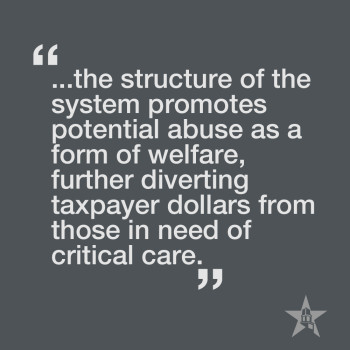Momentarily awakened from my post-lunch reverie amidst the antiseptic odor of the general practitioner’s office, I sharply turned in the plush brown waiting room chair to see an older gentleman in crutches signing away five hundred green ones. As a seven year old with automated abhorrence to the feeblest of expletives (and perhaps no concept of heavy spending), I was instantly shocked at the perceived crude disdain of what I eventually came to realize as harsh reality for the majority of the world’s population—expensive healthcare.
 With the upcoming presidential elections, most of us have recently heard some form of a promise for free, government-funded healthcare or perhaps the more “costly” privatized version as a remedy for this worldwide predicament at the country’s level. Some of us have even ascribed to certain stances on these systems citing familial circumstances, moral convictions, or even mere general preference in support of our personal viewpoints. However, a large majority of us have failed to thoroughly examine these systems in terms of broader, far-reaching pros and cons.
With the upcoming presidential elections, most of us have recently heard some form of a promise for free, government-funded healthcare or perhaps the more “costly” privatized version as a remedy for this worldwide predicament at the country’s level. Some of us have even ascribed to certain stances on these systems citing familial circumstances, moral convictions, or even mere general preference in support of our personal viewpoints. However, a large majority of us have failed to thoroughly examine these systems in terms of broader, far-reaching pros and cons.
Numerous countries have adopted one of three forms of healthcare on a spectrum between full government coverage and privatized coverage commonly labeled the Single-Payer, Two-Tier, and Insurance Mandate systems. The entirely government funded Single-Payer system has been utilized by the majority of countries in these three categories of healthcare and contains a number of recurring problems. Long waiting lines of patients in need of care result in long wait times ranging from weeks to months. When patients finally receive access to care, the quality is comparatively lower due to reduced incentive from health care providers receiving diminished wages.
Limited funding provided by the government (due to limited taxing) in the face of unlimited lines of patients also limits the amounts of needed supplies contributing to the long waiting lines. While everyone subjected to this system at the very least receives some basal level of care debt-free, the structure of the system promotes potential abuse as a form of welfare, further diverting taxpayer dollars from those in need of critical care. Strict adherence to this system also stunts potential innovation regarding the more effective distribution of any kind of higher quality healthcare to any of the population. Innovation in medical advancements is further stunted while more government funding is used to pay for the healthcare rather than for research in the field (particularly in the face of the impending national debt in the United States).
The Two-Tier system provides a government-funded basal level of healthcare while allowing those with the means to purchase supplementary insurance. This system however, leaves those lower-income individuals in need of critical care in the dust, as the privileged in society receive access to much higher forms of healthcare while problems concerning the basal level still stand.
The third system requires a government-mandated purchase of some form of insurance by all citizens (e.g. Obamacare). While this system promotes a competitive private market for insurance companies (potentially providing better benefits with lower associated costs), those lower-income individuals are restricted to more inexpensive forms of insurance with potentially inadequate benefits.
If all of these systems in one way or another inadequately reach those in need of care, what is the solution? Some have opted for an entirely market-based form of healthcare. Millions of people would potentially revert to being uninsured. Non-mandated insurance would also potentially only be purchased by those thinking they’re actually in need of such a service, contributing to potential market failure. In essence, uninsurance and rising costs for health care would continue to exist. The answer cannot merely lie in extensive government involvement or a sole market-based system. However, a necessary first step should perhaps involve extensive reevaluation of efficient resource allocation—an evident power of the free market.

